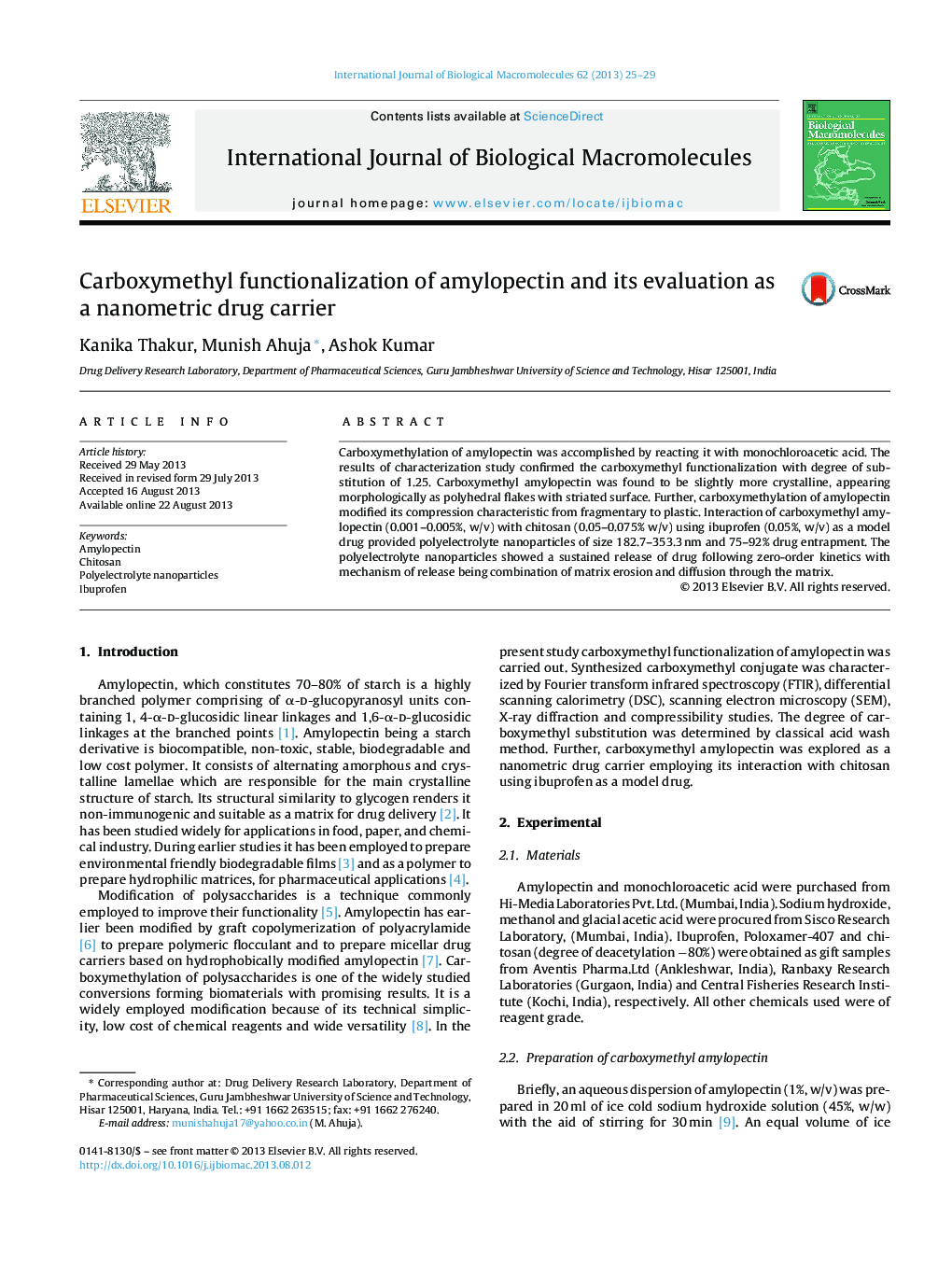| Article ID | Journal | Published Year | Pages | File Type |
|---|---|---|---|---|
| 1986876 | International Journal of Biological Macromolecules | 2013 | 5 Pages |
Abstract
Carboxymethylation of amylopectin was accomplished by reacting it with monochloroacetic acid. The results of characterization study confirmed the carboxymethyl functionalization with degree of substitution of 1.25. Carboxymethyl amylopectin was found to be slightly more crystalline, appearing morphologically as polyhedral flakes with striated surface. Further, carboxymethylation of amylopectin modified its compression characteristic from fragmentary to plastic. Interaction of carboxymethyl amylopectin (0.001-0.005%, w/v) with chitosan (0.05-0.075% w/v) using ibuprofen (0.05%, w/v) as a model drug provided polyelectrolyte nanoparticles of size 182.7-353.3Â nm and 75-92% drug entrapment. The polyelectrolyte nanoparticles showed a sustained release of drug following zero-order kinetics with mechanism of release being combination of matrix erosion and diffusion through the matrix.
Related Topics
Life Sciences
Biochemistry, Genetics and Molecular Biology
Biochemistry
Authors
Kanika Thakur, Munish Ahuja, Ashok Kumar,
